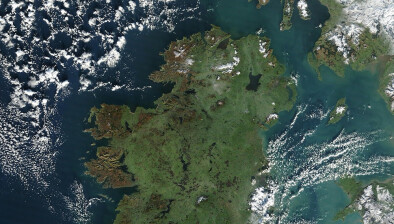Maria O’Loan: Carbon Border Adjustment Mechanism – the next Brexit standoff?

Maria O'Loan
Maria O’Loan of Tughans writes on the implications for Northern Ireland businesses of new UK and EU carbon measures.
The UK government has launched its consultation on the introduction of a UK Carbon Border Adjustment Mechanism (CBAM) which closes on 13 June 2024.
The EU CBAM came into force in October 2023 with the introduction of reporting requirements, with full implementation in 2026.
Both the EU and UK CBAMs will have serious implications for Northern Ireland industry.
What is a CBAM?
A CBAM is a tax regime on high-carbon imports such as steel and cement. A CBAM levy is applied when taxes on pollution in the exporting country, the “carbon price”, are lower than in the destination country.
The aim of a CBAM regime is to ensure the carbon price of imports is equivalent to the carbon price of domestic production, and that domestic climate objectives are not undermined by cheaper imports.
What sectors will the UK CBAM apply to?
The proposed UK CBAM will apply to a tax on embedded carbon across seven sectors: aluminium; cement; ceramics; fertiliser; glass; hydrogen; iron and steel. Notably, the UK CBAM excludes electricity which is included in the EU CBAM scheme.
UK CBAM will be calculated by reference to:
- Scope 1 Emissions: direct emissions from the manufacturing process in the exporting country);
- Scope 2 Emissions: indirect emissions from the generation of purchased energy used in the manufacturing process, e.g. electricity, heat, steam and cooling (noting the EU CBAM only includes electricity);
- Scope 3 Emissions: emissions associated with certain “precursor goods” or goods used as an input material in the overseas production of the imported goods.
How will it be calculated?
The UK is proposing to introduce a dual approach to calculating the emissions associated with imported goods. Importers can either use default values as determined by the UK government or to use data on the actual emissions involved. The use of data on the actual emissions involved will require detailed rules to be developed on monitoring and reporting on emissions as well as independent verification. These have not yet been published or put out for consultation.
A practical difficulty for industry is that CBAM regimes require information on emissions embedded in goods manufactured in countries where accounting for carbon may be less advanced than in the UK. The alternative is that businesses adopt the default values set by the government which may overestimate the embedded carbon.
To obtain a reduction or waiver of the EU CBAM, non-EU firms will have to provide third-party verifiable data on the carbon content of their exports to the EU. Such data may be difficult or impossible to obtain for indirect emissions. Under the EU CBAM, from 1 January 2025, only the EU method will be accepted and estimates (including default values set by the EU) can only be used for complex goods if these estimations represent less than 20 per cent of the total embedded emissions.
Northern Ireland-specific issues
The concern for Northern Irish businesses exporting into the Republic of Ireland or the wider EU, is that they may incur significant costs in complying with two differing CBAM regimes.
The attitude of the EU to the proposed UK CBAM regime is not yet clear. It is possible that the EU could be concerned that Northern Ireland becomes a “back door” to EU for high-carbon goods, and therefore the EU may require the EU CBAM to apply to goods coming from Great Britain to Northern Ireland and/or impose significant administrative requirements.
It is already clear that there will be a number of points of divergence between the EU and UK regimes which may place additional pressures and costs onto Northern Irish businesses.
The EU’s carbon price is currently around £61 per tonne, compared to around £36 in the UK. This demonstrates one potential divergence, and therefore uncertainty, that arises when the EU and UK emissions trading schemes (ETS) are not aligned.
The EU CBAM applies to the electricity generation sector (which operates on an all-island basis) but electricity generation is excluded from the UK CBAM. The UK CBAM will apply to the glass and ceramic sectors which are excluded from the EU CBAM.
The way in which the UK and EU CBAM are calculated will differ, with the factors making up indirect emissions differing. In addition, whilst we do not yet know what the UK approach to actual emissions data, the existing EU rules are complex and will be continually reviewed and updated so some degree of divergence is inevitable.
The UK scheme will become operational one year after the EU scheme. From 2026, goods manufactured in the UK, which already face a cost under the UK ETS could face further charges under the EU CBAM and, may face further administrative costs as a result of the additional reporting obligations associated with the EU CBAM.
At this stage it is too early to tell how the two regimes might interact. It is possible that the EU and UK could enter trade talks to agree to link ETS which would likely ease pressures on Northern Irish businesses. However, such negotiations are likely to be slow, given that it took seven years for the EU and Switzerland to agree to link ETS.
The EU CBAM could apply in Northern Ireland with the agreement of the UK government under the terms of the Windsor Framework but that is likely to be contentious.
Given the serious implications for Northern Ireland it is vital that Northern Irish businesses engage with the consultation process.
![]()
- Maria O’Loan is an of counsel at Northern Ireland firm Tughans.






